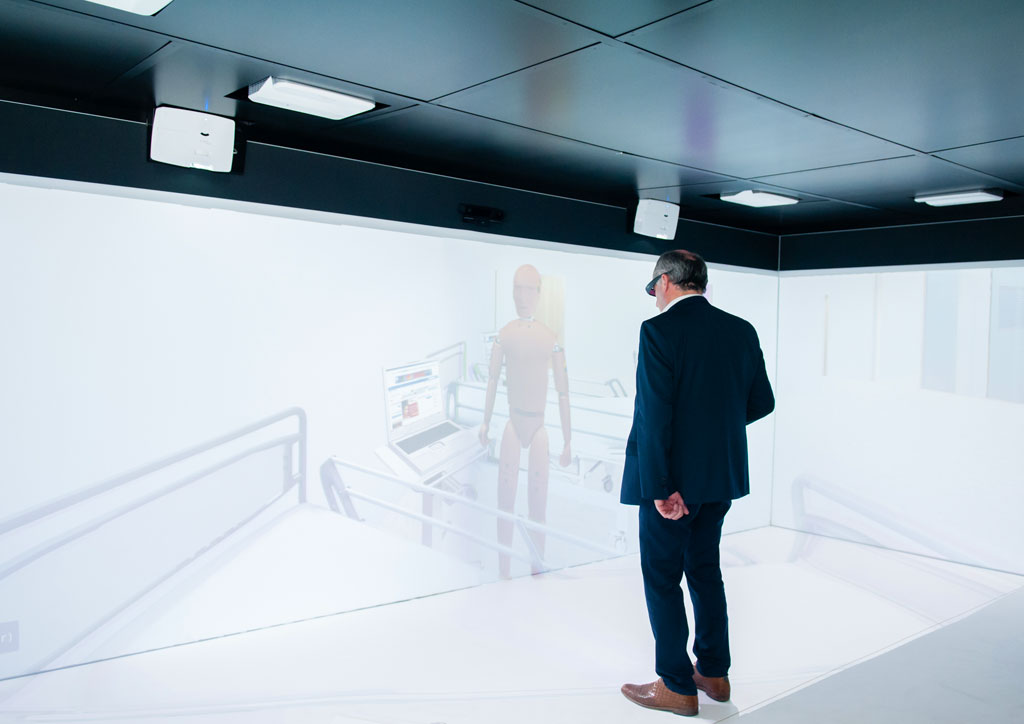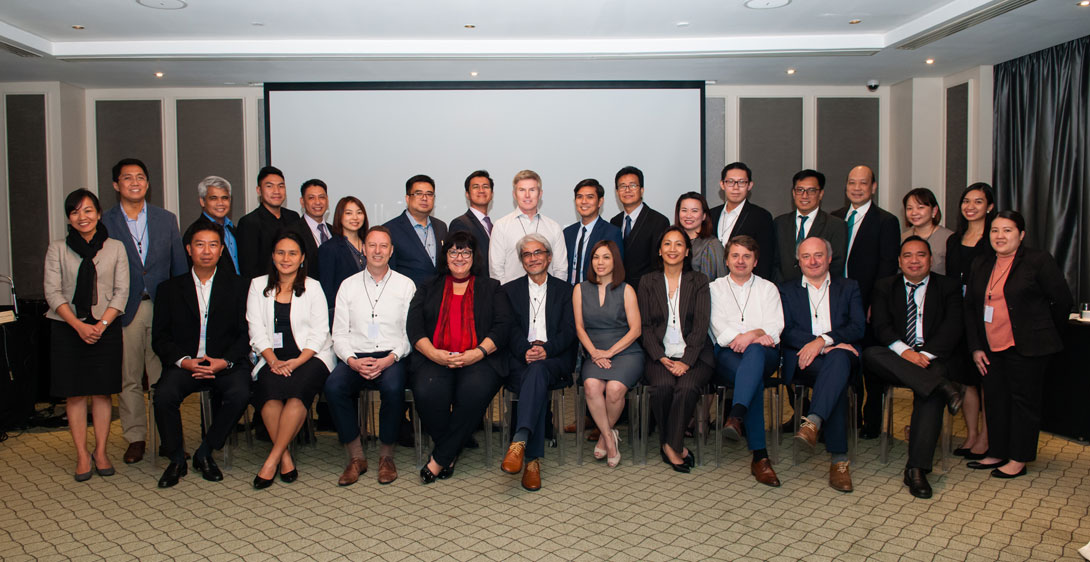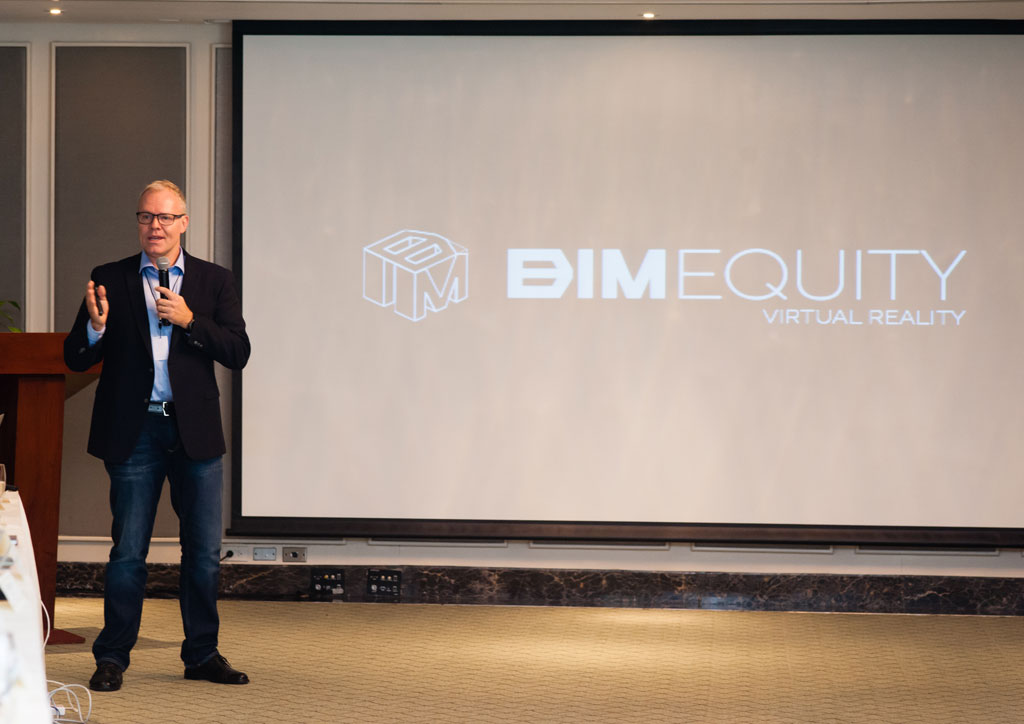
A+ Design Group co-creates with Virtual Design and Construction
Building on Aidea’s journey to become an integrated design provider, A+ Design Group focuses on clients who need to build technically challenging projects. The design scope gets expanded, from business development and project establishment through all the stages of design, construction and building operation. The group’s design process utilizes Virtual Design and Construction (VDC) to deliver integrated and coordinated design packages ready for implementation.

The 16 member firms possess expertise in business planning, real estate and development, branding, architecture, engineering, interior design, environmental graphic design, healthcare, biotech and technology with bases in Asia, Middle East, US, Australia and Europe.

A+ Design Group held its first face to face conference in Makati City last 14 to 16 November 2017. Hosted by Aidea, the three day gathering brought together member firms from around the world to discuss new ways to work together across typical scope boundaries.
BluPrint sat down for an exclusive interview with Aidea’s President & CEO and A+ Design Group’s Chairman & Founder Jojo Tolentino and A+ Design Group’s CEO Serge Bruylants to discuss design alliances and their vision for A+ Design Group.
What prompted this initiative? From what I gather from the presentations, you have a long working history with one another.
Jojo Tolentino: Serge was our client when he was still the Global Architect of P&G. We, meaning about more than half of the people in this room, have worked together for more than fifteen years as his designers suppliers. During that time, we used to meet regularly as a team, as part of a global Community of Practice, where we learned to appreciate the power of cross-border and cross-functional collaboration.
Serge Bruylants: At the time, AG Lafley, P&G’s CEO wanted to change the design culture in the company. So in order to accelerate design and innovation, I wanted to get out of the middle and get our core consultants together. Then I brought in other guests to talk about milestones and innovations in design. Everyone really liked that and we met for six years annually. It drove collaboration and cross-pollination among the different firms, even when P&G was not involved.
We saw first hand the strategic advantage of co-creation, and seeing each other as partners rather than supplier and client. What was amazing was this drive to explore unfamiliar territory together.
READ MORE: Aidea Philippines’ Jojo Tolentino on Developing Architects

JT: We then went our own ways. But because we had very successful projects together, the desire to collaborate remained. Aidea had always wanted to operate on a global level, so I thought: why don’t we continue that concept of an alliance. A good comparison would be the airline or university alliances, where each member company retains its identity but is part of a network that shares the same values.
As designers, it’s another way to grow the business. In the past, you had to do it on your own—you had to set up satellite offices all around the world and hope they can get enough work. We accepted that we cannot be at all places all the time, and because how we leverage technology, the best way for us to grow is to find like-minded people and firms. We have linked ourselves virtually so that we can deliver seamlessly. Because of our good history, Serge agreed to join and lead the group.

What were the criteria for selecting the companies and individuals for A+ Design Group?
JT: First and foremost, we want firms that are global-thinking, not necessarily large in scale. In fact, we wanted to work with modest-sized firms because they are the ones who want to increase capacity without necessarily adding more people. The dilemma of a 40-man firm is that they are neither big nor small and they want to take themselves to the next level, but they are wary of hiring all the skills in-house. But with the A+ set-up, they can tap on additional resources and disciplines anywhere in the world from the member firms, so they don’t need to grow their office locally.
The firms also need to be flexible with their internal systems to accommodate our model for collaboration. Other benefits are utilizing the latest technology and exploring markets that you were not able to penetrate because you were initially limited by your size. To us, that’s exciting.
SB: You can see that every service a client might need is in the room. Our competitors now are the mega-sized engineering and architecture firms. They have huge overhead costs and, with that scale, it’s a struggle to be sustainable. Besides our great service offerings, the client can avail of the unique local knowledge as well as the deep expertise, which are crucial for complex high-value projects like hospitals or R&D centers. We have experienced the pain of trying to collaborate remotely and get those typologies right so we’ve figured how to make it work. On top of this, we don’t have the huge overheads, allowing us to optimize our costs. When you look at all of these elements together, the value proposition sets us apart in a good way.

Of course, firms represented in this room will be tapped according to a project’s needs. But can you give me a project type that will make use of almost all of the skills in this room?
SB: I think a good example, which was mentioned by one of the speakers earlier, is the hotel lab: an incubator facility. That might not be the biggest project, but it is very complex.
JT: We see the group as a provider not just for design. That’s why you heard earlier today presenters focused on feasibility studies, financials, leasing strategy, and constructability. Those are important for a successful project. Most firms don’t have that. They focus more on the architectural design, engineering, or a combination.
SB: We focus on the Southeast Asian and the Middle East markets because these are underserved but dynamic regions. Global firms can still come in from their satellite offices closest to these areas. But A+ is different because we start locally and we bring in the disciplines required. Balancing local and global, specialist expertise ultimately provides best value for the client.
JT: The other thing also is that we won’t target specific projects. We present ourselves as partners to the client. We want to be in a position where we become a trusted advisor. So as early as selecting a site or thinking of a business model for an expansion, we should already be providing our expertise so we can follow through with the design and also continue work with them on other projects. If we have a long-term working relationship with them, then all the firms here can possibly be tapped.


This is the first A+ face to face conference. Will we see more members next year? Will you open it up as a learning platform for other designers that are not members?
JT: The purpose of the conference is to bring the member firms together so this annual gathering will be limited to the A+ group. But, yes, we hope to see new faces next year because we want to expand the range of expertise that will add value to the group. For as long as they fit the criteria and if they are from locations we want to cover, then yes. You can be a location-based partner or a skill-based partner or you can be both.
SB: We can in the future add an additional day, open to non-members to drive more learning. Aidea has a learning center, which is something we want to scale up for our members first. But, surely, there could be an interest growing from outside the group as well.
JT: What I’d like to achieve here is to inspire other firms to think that there are other ways to grow your business and to collaborate.
Given the ASEAN integration and with the GATS (General Agreement on Trade in Services) happening in 2020, we’re starting late. But at least, we are doing it. Some firms are not even thinking about doing this. And those who think they can survive on their own are firms that will be out of business when globalization is at full throttle.
SB: I feel Asia is the right place to drive this. There is a level of optimism here, that is no longer present in Europe and the United States. Plus, many alliances I’ve seen that began either in the US or Europe often start with the wrong motive. It’s more of a conquer-the-world kind of thing. But with us, it’s our desire to learn new things, to work with others, and gain new experience. A+ members are alike in the sense that we don’t want to be limited by our cultural bubbles or silos. That likeness makes the group strong.
The A+ Design Group initiative is not only a response to the ongoing integration in the region. This group is a picture of what design practice could be in the coming years. In an age where national borders are more porous than ever, especially with the internet, A+ is imbibing values that will help them succeed in the global stage: multi-disciplinary, integrated, collaborative, virtual, and networked. ![]()
A+ Design Group members as of 2017: AIDEA (Philippines), ARDOR ARCHITECTS (Vietnam), ARBAY COMPANY LIMITED (Thailand), BIM EQUITY A/S (Denmark), CORPORATE REAL ESTATE ADVISERS (Singapore), DOALL ARCHITECTS (South Korea), FIERCE DESIGN (Singapore), GROUNDBREAKER (Philippines), HICT (Belgium), ARCHITECT INDOMEGAH (Indonesia), KOLAR DESIGN (U.S.A.), MEINHARDT (Hong Kong), MODULAR ARCHITECTS (Myanmar), ORBIT DESIGN STUDIO (Thailand), SVR-ARCHITECTS (Belgium)


